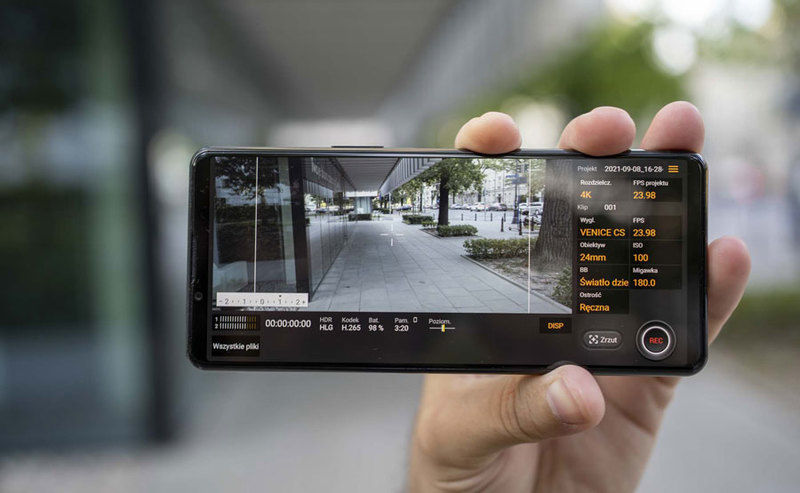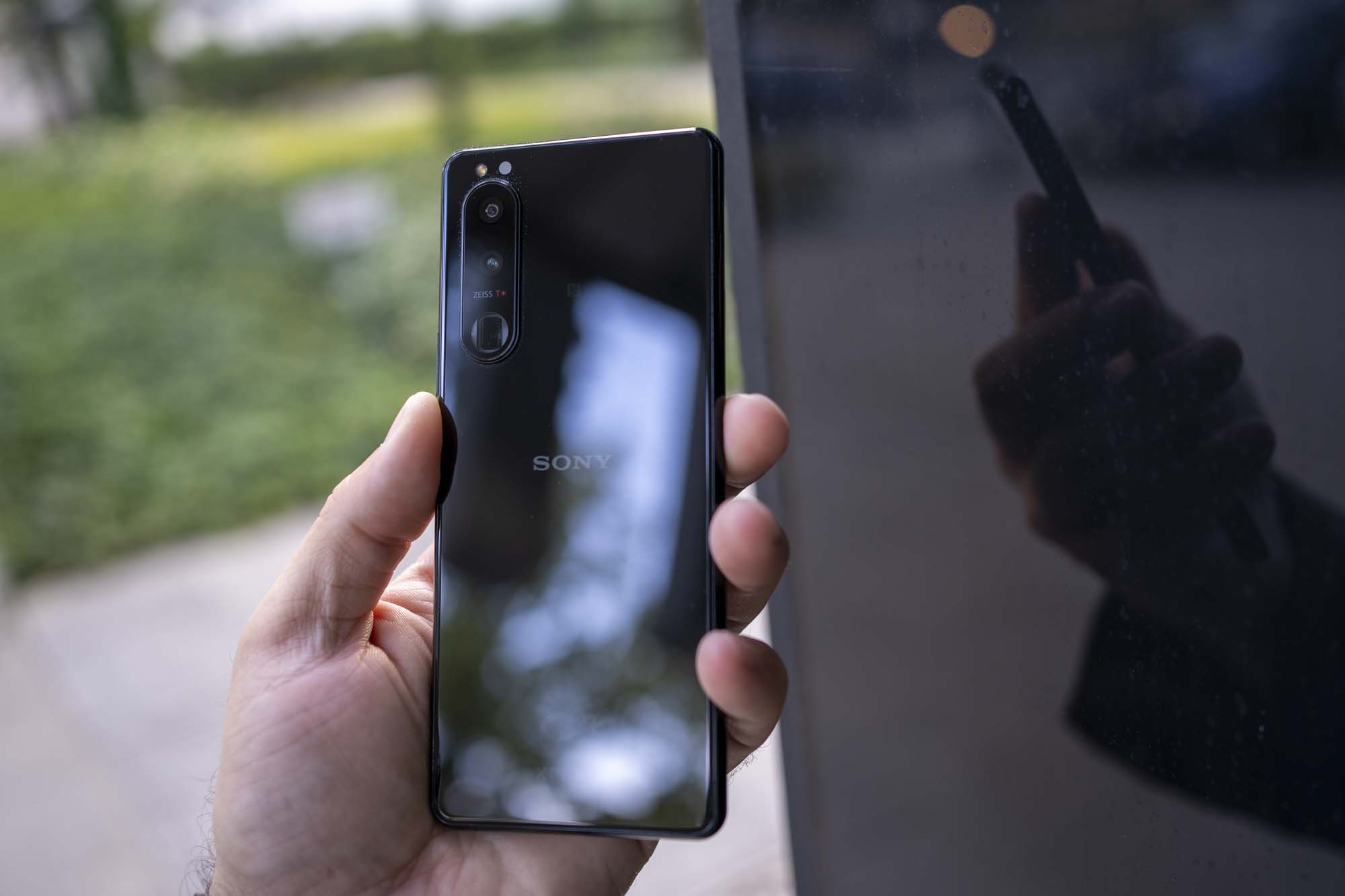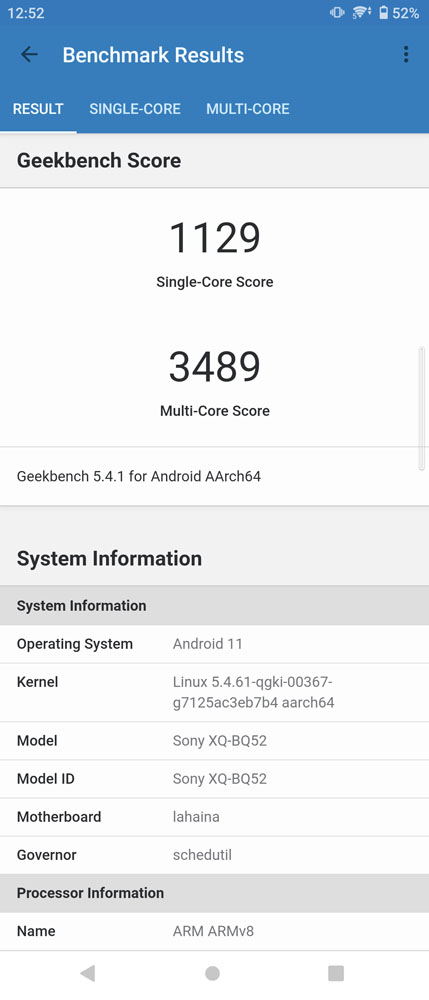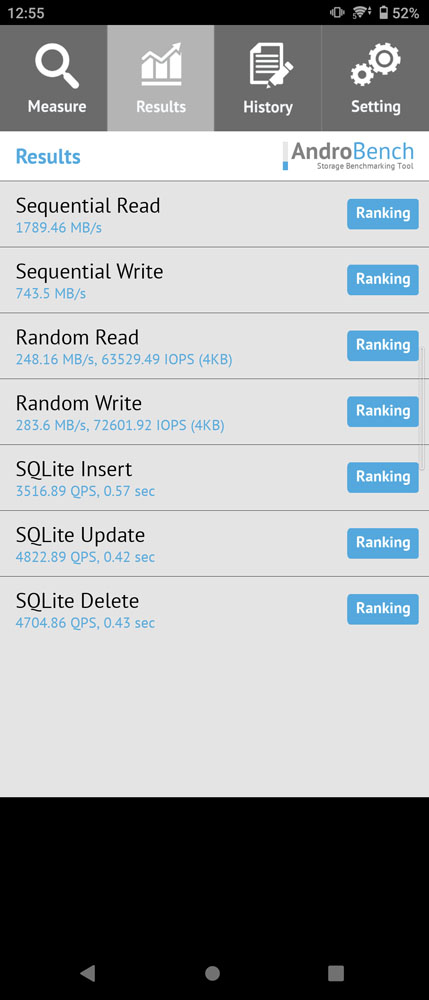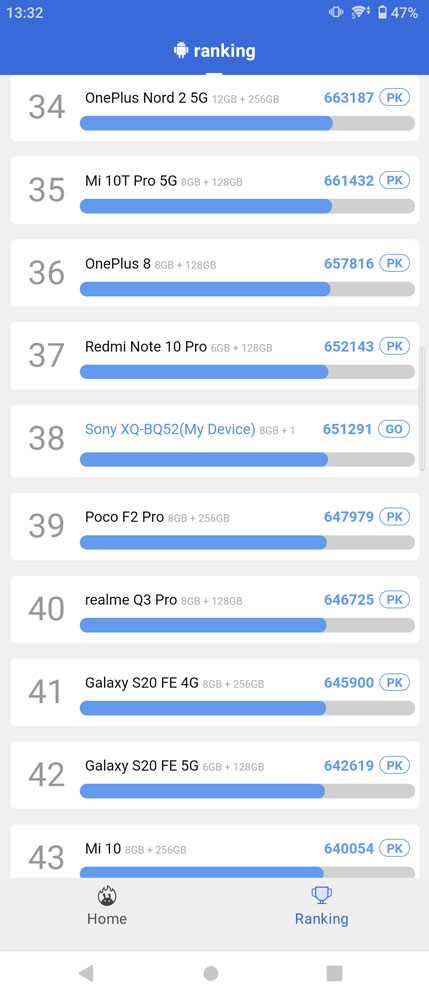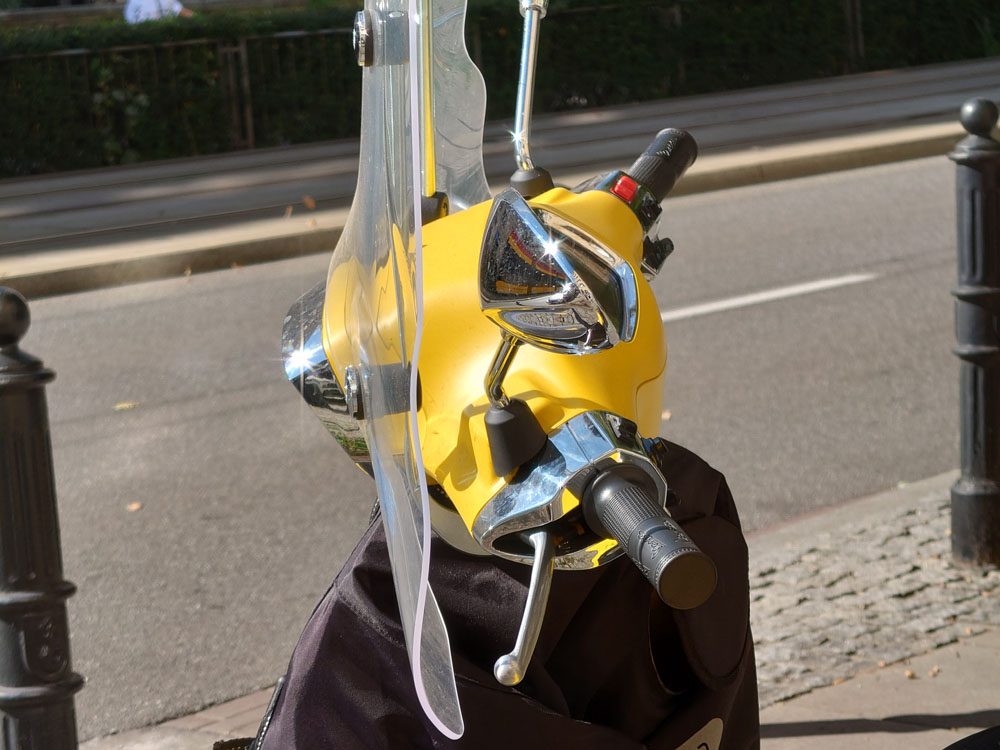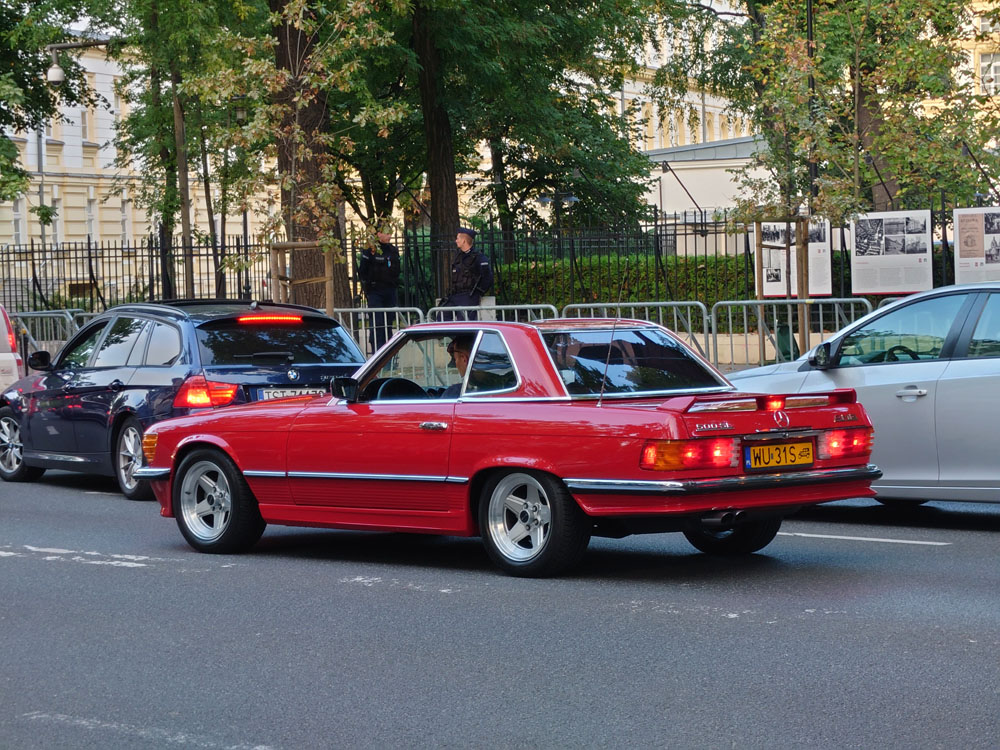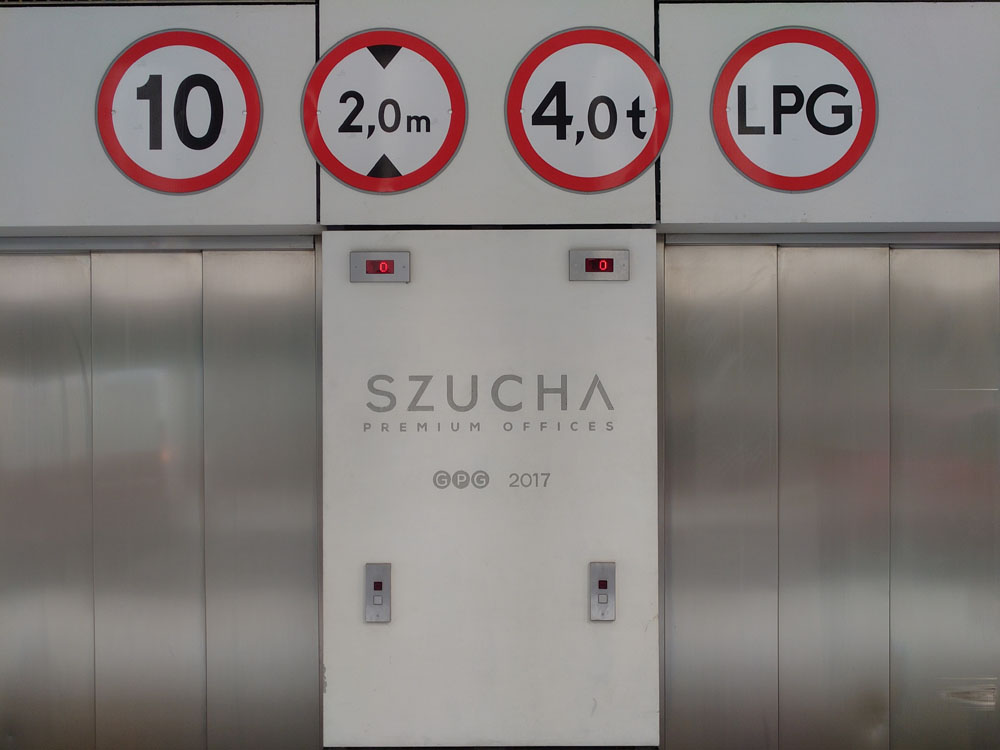The Sony Xperia 5 III has turned out to be a surprisingly successful smartphone, although it may go unnoticed by many. Sony’s reputation in the smartphone industry suffered due to a series of poor decisions. Nevertheless, the Japanese manufacturer hasn’t given up and has quietly begun producing genuinely impressive smartphones once again. The Sony Xperia 5 III is one of the smallest and lightest smartphones on the market, equipped with the powerful Snapdragon 888 chipset. Its compact dimensions put it in direct competition with the Asus Zenfone 8 and Samsung Galaxy S21. The Xperia 5 III boasts stereo speakers, a headphone jack, a notification LED, a fingerprint sensor integrated into the power button, and a camera system with up to four different focal lengths. This makes it an ideal choice for those who aren’t fond of the current smartphone trends. Personally, I find this phone very appealing, and aside from a few drawbacks, its main challenge in gaining market acceptance is its price. Nonetheless, it’s certainly worth taking a closer look at the new Xperia.
Advantages of the Sony Xperia 5 III:
- Classic Design without Compromises: Sony has opted for a classic design with this smartphone, avoiding the notches or curved edges seen in many modern devices. This design appeals to users who prefer a traditional smartphone appearance.
- Notification LED and Headphone Jack: It’s becoming increasingly rare to find smartphones with a notification LED and a headphone jack. The Xperia 5 III retains these features, catering to users who value such functionalities.
- High-Quality Stereo Speakers: Sony’s commitment to audio quality is evident in this device, as it features high-quality stereo speakers. This enhances the overall audio experience, making it great for multimedia consumption.
- Fast Fingerprint Sensor: The fingerprint sensor integrated into the power button is not only fast but also convenient, providing secure and quick access to the device.
- Top-Quality OLED Display with 120Hz Refresh Rate: The Xperia 5 III boasts an exceptional OLED display with a high refresh rate of 120Hz. This results in smooth animations, responsive touch interactions, and vibrant, true-to-life colors.
- Powerful Processor and Specifications: Equipped with the Snapdragon 888 processor and 8GB of RAM, this smartphone offers flagship-level performance. It can effortlessly handle demanding tasks, ensuring a lag-free experience.
- Android 11 with Good Optimization: Running on Android 11 with Sony’s optimizations, the Xperia 5 III delivers a polished and fluid user interface, along with timely updates and security patches.
- Three High-Quality Cameras with Four Focal Lengths: Sony’s camera setup stands out. It offers three rear cameras, including a unique variable focal length lens that effectively provides four different focal lengths. This versatility allows users to capture a wide range of subjects and scenes.
- Outstanding Autofocus and Subject Tracking: Sony’s expertise in camera technology shines through in the Xperia 5 III. The autofocus, subject tracking, and eye detection work remarkably well, even for moving subjects and animals. This ensures sharp and detailed photos.
- Excellent Photo Quality and Color Science: The Xperia 5 III delivers high-quality photos with precise color rendering. Images resemble those taken with dedicated cameras, making it an attractive option for photography enthusiasts.
- Cinema Pro Mode for Video Enthusiasts: The inclusion of Cinema Pro mode caters to video enthusiasts. This feature allows for advanced video recording, including manual control over exposure, frame rate, and color settings.
- Long Battery Life: Despite its relatively compact size, the Xperia 5 III houses a substantial 4500mAh battery. This translates to impressive battery life, ensuring that the phone can easily last through a full day of usage.
- Unique Xperia Character: Sony has created a smartphone with a distinct character that sets it apart from the sea of generic devices. It appeals to users looking for a unique and premium experience.
Disadvantages of the Sony Xperia 5 III:
- Visible Stains and Smudges on the Housing: The phone’s housing has a tendency to accumulate stains and fingerprints, which can detract from its aesthetics.
- Slippery on Inclined Surfaces: Due to its flat design, the Xperia 5 III may slide off inclined surfaces, potentially leading to accidents or damage.
- Lacks Face Unlock Feature: Unlike some of its competitors, the Xperia 5 III lacks facial recognition technology for unlocking the device, which can be less convenient for users who prefer this method.
- Lower Brightness in Direct Sunlight: The device’s screen may struggle with visibility in bright, direct sunlight due to its lower maximum brightness compared to some competitors.
- Heating and Throttling Issues: Under heavy loads or extended usage, the Xperia 5 III can heat up considerably, resulting in performance throttling. This can lead to a noticeable drop in performance.
- Pre-Installed Large Games: The smartphone comes with two large pre-installed games that cannot be uninstalled. This can consume a significant portion of the device’s storage.
- Flare and Contrast Drop in Backlit Scenes: In scenarios with strong backlighting, the Xperia 5 III may exhibit lens flare and a noticeable decrease in contrast, affecting photo quality.
- Lacks Macro Photography Capability: The absence of a dedicated macro camera means that close-up photography may not be as convenient or detailed as some users would prefer.
- Average Night Photo Quality: While the phone excels in many photography aspects, low-light and nighttime photography may not meet the expectations of users seeking exceptional results in these conditions.
- Inability to Switch Cameras During Video Recording: Users cannot seamlessly switch between different camera lenses while recording videos, limiting versatility in video shooting.
- No Wireless Charging Support: The Xperia 5 III lacks support for wireless charging, a feature available in some competing models at similar price points.
- Lengthy Charging Time: Charging the device to full capacity can be time-consuming, taking nearly two hours with the provided 30W charger.
In conclusion, the Sony Xperia 5 III is a feature-rich smartphone with impressive camera capabilities and a unique character. However, it faces fierce competition in its price range, and its premium pricing may deter some potential buyers. Despite its drawbacks, it caters to Sony enthusiasts, photography aficionados, and those in search of a compact yet high-performance smartphone.
Design
What immediately captures one’s attention when looking at the Sony Xperia 5 III is its remarkably compact size. With dimensions measuring 157 x 68 x 8.2 mm and a weight of 168 grams, the Xperia 5 III offers a noticeable difference in terms of portability. This smartphone will certainly appeal to individuals who prefer smaller and more manageable devices. Notably, among smartphones featuring top-tier processors, it competes in size with the Asus Zenfone 8, although the latter only offers two cameras, and the Samsung Galaxy S21.
The Xperia 5 III sports a flat housing design, and it sits stably on a table with minimal wobbling. The camera lenses protrude slightly from the housing. It’s somewhat ironic that one of the smallest phones on the market manages to incorporate stereo speakers, a headphone jack, and a notification LED, features rarely seen in modern phones regardless of their size or price range. The stereo speakers deliver ample and full sound, surpassing the audio quality of other Xperia models. The fingerprint reader is cleverly integrated into the power button, located on the right edge of the phone. It operates swiftly and reliably, and the button’s flush design makes it convenient for use with various car mounts that secure the phone by its edges. Alongside the volume controls, you’ll also find two additional physical buttons – one for activating Google Assistant and the other, a characteristic two-stage camera shutter button commonly found in Xperia devices.
Furthermore, it’s worth noting that the Xperia 5 III boasts an IP68 rating, indicating its resistance to water and dust.
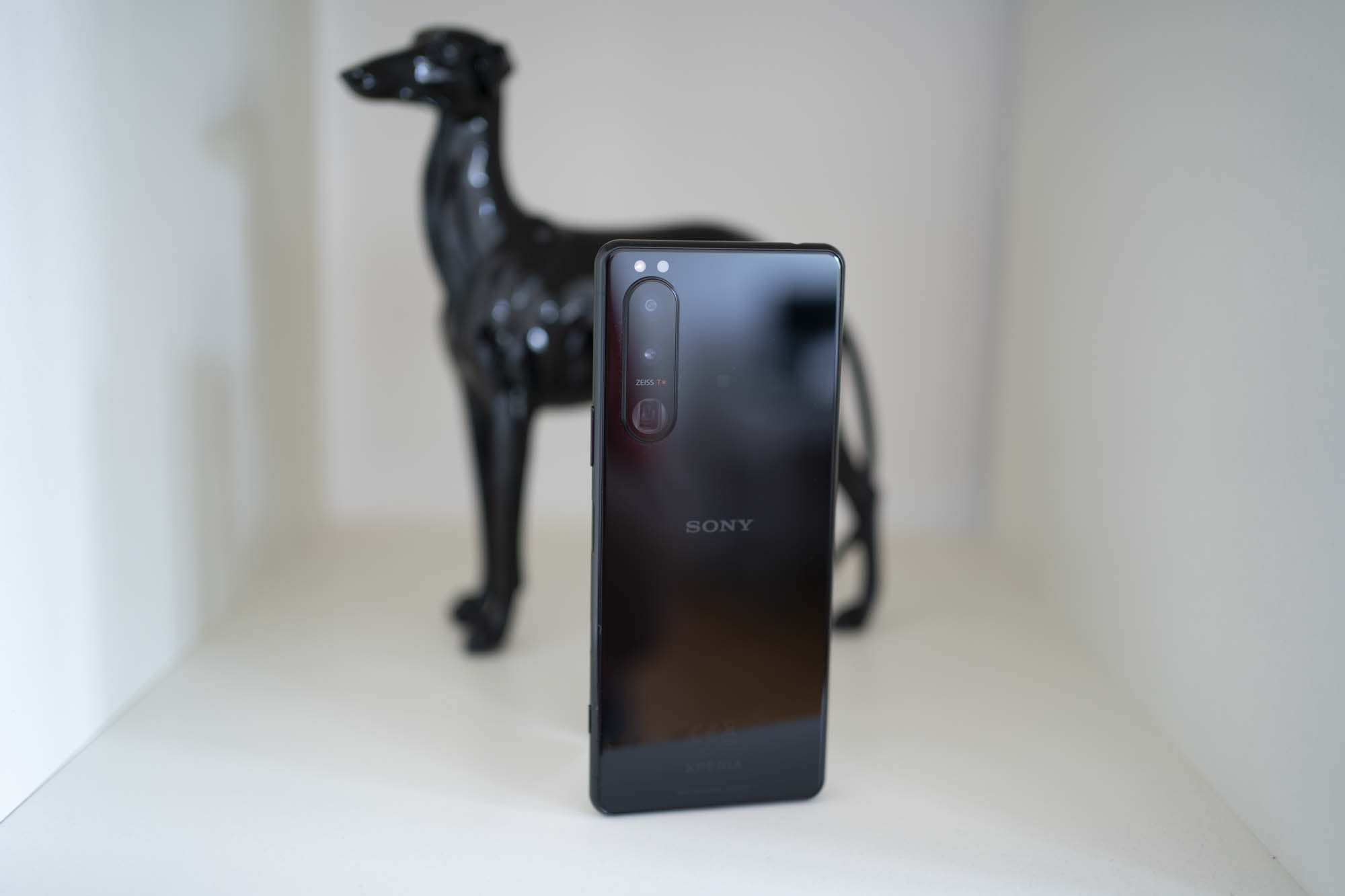
Display
The Xperia 5 III features a 6.1-inch OLED display with an FHD+ resolution of 2520 x 1080 pixels and an aspect ratio of 21:9. This screen offers a 120 Hz refresh rate and is protected by Corning Gorilla Glass 6. Its design adheres to a rectangular shape with nearly square corners, maintaining a flat and classic appearance. Despite Sony’s decision to maintain symmetrical upper and lower bezels to accommodate the front camera, these bezels have become so minimal that they no longer pose an issue. Due to its smaller diagonal size and 21:9 aspect ratio, the phone is exceptionally easy to handle.
The display quality is truly exceptional. While OLED technology has become the norm, the Xperia screen stands out in my opinion compared to other devices I have used. It delivers a visually stunning experience, except when viewed in bright sunlight. In such conditions, it becomes somewhat less legible compared to other smartphones I’ve recently used. This is due to its lower maximum brightness and a screen surface that reflects more light.
What’s particularly impressive about the Xperia 5 III is the extensive range of display settings it offers. Alongside the standard mode, there’s a creator mode bearing the CineAlta logo, which is compatible with the BT.2020 color gamut and boasts a 10-bit HDR color palette. The phone also provides a conventional dark mode and night backlight. In the white balance settings, users have the flexibility to not only adjust warm or cool colors but also control individual component colors and fine-tune them using the Kelvin scale.
Operating system & Specifications
While the Xperia 5 III may not be Sony’s highest-priced flagship model, it certainly boasts flagship-level specifications. It comes equipped with the powerful Snapdragon 888 processor, featuring a clock speed configuration of 1 x 2.84 GHz + 3 x 2.42 GHz + 4 x 1.80 GHz. This processor is paired with 8 GB of RAM and offers 128 GB of storage for both system and user files. If needed, the memory can be expanded using a micro SDXC card, though this requires sacrificing the second SIM card slot. Another version of the phone with 256 GB of built-in memory is available, though considering the price of PLN 4,499, one might expect 256 GB as the base configuration.
Here are the benchmark results:
- Antutu 9 – 651291
- Geekbench 5 – 1129/3489
- Androbench sequential read/write – 1789/743 MB/s
These results align with top-tier specifications, although it’s worth noting that some devices with the same processor have achieved slightly higher scores. In everyday use, the Xperia 5 III delivers ample performance without overheating issues. However, under continuous and heavy loads, the phone does tend to heat up significantly, leading to noticeable performance drops, especially in benchmark tests. Throttling causes a reduction in single-core performance by approximately 12%, and a more substantial decrease of up to 37% across all cores. While these figures may seem substantial, it’s important to clarify that during regular use, the phone does not exhibit noticeable slowdowns; the performance decrease is primarily evident in synthetic benchmark results.
In terms of connectivity, the Xperia 5 III offers a comprehensive package, including LTE, 5G, WiFi 6 ax, Bluetooth 5.2, and NFC. Notably, Sony includes LDAC, a Bluetooth audio codec developed by Sony that provides nearly double the bandwidth of its closest competitor and triples the transfer rate compared to the standard codec. LDAC support is available in some smartphones from other manufacturers, but as a proprietary Sony technology featured in Xperia devices, it ensures reliable performance.
For location services, the phone utilizes GPS, GLONASS, BDS, GALILEO, and QZSS standards. The sensor array comprises an accelerometer, gyroscope, proximity sensor, light intensity sensor, barometer, digital compass, and a color spectrum sensor.
The Sony Xperia 5 III runs on Android 11 and has received security updates up to July 1, 2021. Sony has streamlined its suite of pre-installed applications, allowing users to choose which ones they want during the initial setup process. This approach minimizes unnecessary clutter in the phone’s menu. However, it’s worth noting that two substantial games, Asphalt 9 (2.41 GB) and Call of Duty (3.82 GB), come pre-installed and cannot be uninstalled, only disabled. This decision may not align with every user’s preferences.
Sony has always been known for its minimalist approach to Android modifications. They aim to provide a user experience that closely resembles stock Android, catering to those who appreciate the default Android layout and transparency. If you’re seeking an Android overlay loaded with unconventional features, you won’t find it here.
.
Camera
Sony Xperia 5 III has three cameras, but thanks to its unique varifocal lens solution, it offers 4 different focal lengths.
- 12 MP, f/1.7, 24mm, Dual Pixel PDAF, OIS – main camera
- 12 MP, f/2.3, 70mm, f/2.8, 105mm, Dual Pixel PDAF, OIS – one camera offers two optical magnifications 2.9x and 4.4x
- 12 MP, f/2.2, 124˚, 16mm, Dual Pixel PDAF – ultra wide-angle camera
- 8 MP, f/2.0, 24mm – selfie
Judging solely by the specifications, it’s evident that Sony has put a lot of effort into the Xperia 5 III’s camera system. Notably, two out of the three cameras feature optical stabilization, and all three, including the wide-angle lens, offer incredibly fast autofocus capabilities. One standout feature in the smartphone market is the inclusion of dual focal lengths, setting it apart from the competition. Even the standard selfie camera, while not groundbreaking, still delivers good quality results. Considering the Xperia 5 III’s compact size, this camera setup is truly impressive.
Upon launching the camera app, users familiar with Sony’s recent cameras will immediately recognize the interface and autofocus performance. Sony’s unique advantage as both a camera and smartphone manufacturer becomes evident here. While many smartphones offer features like face detection and object tracking, the Sony Xperia 5 III excels in this regard. The square focus point remains locked onto the selected object, regardless of how you move the frame. It doesn’t just detect faces but also tracks eyes, even in animals, with remarkable precision. This sets it in a class of its own compared to the competition.
Furthermore, for those acquainted with manual controls on Sony cameras, switching to one of the manual modes on the Xperia 5 III will feel like second nature. The layout of functions and symbols closely mirrors that of a camera, allowing users to engage with settings like burst photography, light metering preferences, disabling face tracking, and saving photos in RAW format. This level of control extends to every parameter and function, making it a photographer’s delight. Sony has also managed to bring its renowned color science to the smartphone, resulting in colors that closely resemble those produced by dedicated cameras, rather than typical smartphone outputs.
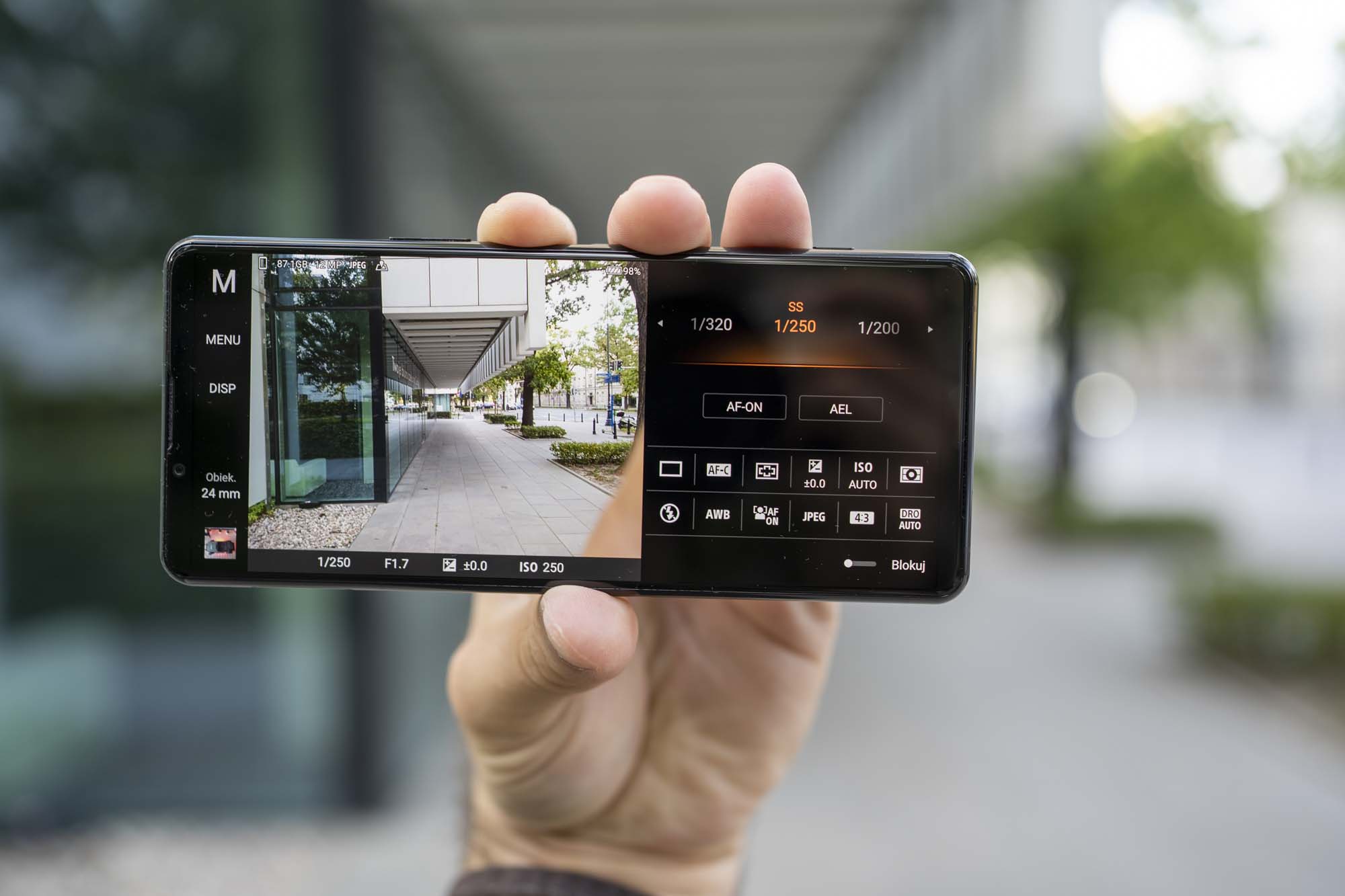
How does the Sony Xperia 5 III perform in practical photography? In practice, the Xperia 5 III excels in several key aspects. It handles tonal transitions with finesse, offering an impressive tonal range. Photos from all four focal lengths are sharp and detailed, and the optical zoom capabilities rank among the highest in the smartphone realm, though there are competitors that offer even greater magnification. In essence, the Xperia 5 III delivers high-quality photos with three notable exceptions:
Firstly, it’s important to note that the Sony Xperia 5 III isn’t designed for macro photography. It lacks a dedicated macro camera, and its existing cameras struggle to focus on close-up subjects. Secondly, when capturing photos against direct sunlight, I observed aggressive lens flares and a significant decrease in contrast – this effect is the most pronounced I’ve seen in a smartphone. Thirdly, the phone lacks a dedicated night photography mode. Given its alignment with full-fledged cameras that typically don’t offer such modes, you’ll need to manage similar limitations. This means you won’t find extensive HDR capabilities that combine bright lights and dark nights, advanced noise reduction from multiple frames, or super long handheld exposures.
In terms of video recording, I’m quite impressed with the quality of the footage, both in terms of color reproduction and detail. The 4K recordings look fantastic, and the video stabilization is noteworthy. However, my only grievance lies in the inability to switch between cameras while recording video. You must choose the camera before recording, and once recording starts, you’re limited to digital zoom.
A notable aspect worth mentioning is the Cinema Pro application, which empowers users to engage in advanced smartphone videography. This app allows for manual adjustments of exposure, precise frame rate and image color settings, specifying shutter opening angles in degrees, and adhering to the 180-degree shutter rule for 24-frame recording at 1/48 second. Manual focus provides creative control, enabling users to pre-set focus points and transition between them manually for smooth rack focusing – the transition between different focal planes. While recording, you can conveniently monitor battery status and remaining memory. Projects can be organized to streamline your video recording endeavors. For individuals seeking to explore their artistic videography aspirations with a pocket-sized device, this is a dream come true. However, it might surprise some.
Sample Pictures
Battery life
The Sony Xperia 5 III boasts a 4500 mAh battery, which may not seem exceptional at first glance. However, when compared to similarly sized smartphones like the Samsung Galaxy S21 and Asus Zenfone 8, both equipped with 4000 mAh batteries, the Xperia stands out with an extra 500 mAh of battery capacity.
During a test involving continuous YouTube playback at half screen brightness, the Xperia 5 III only depleted to 49% after an impressive 9 hours and 39 minutes. This equates to nearly 20 hours of uninterrupted video streaming on a single charge. Such endurance places it ahead of the competition, making it clear that this compact Xperia not only sports a larger battery but also delivers longer-lasting performance – a noteworthy achievement.
Charging the Xperia 5 III is facilitated by a 30W charger. While the charging speeds aren’t groundbreaking, as it can charge around half of the battery in half an hour, a full charge requires nearly two hours. There are smartphones available that can achieve a full charge in less time than it takes the Xperia to reach the halfway mark.
Regrettably, the Sony Xperia 5 III does not offer wireless charging or reverse charging capabilities, which might come as a surprise considering its price range. These features were reserved for the Xperia 1 III.
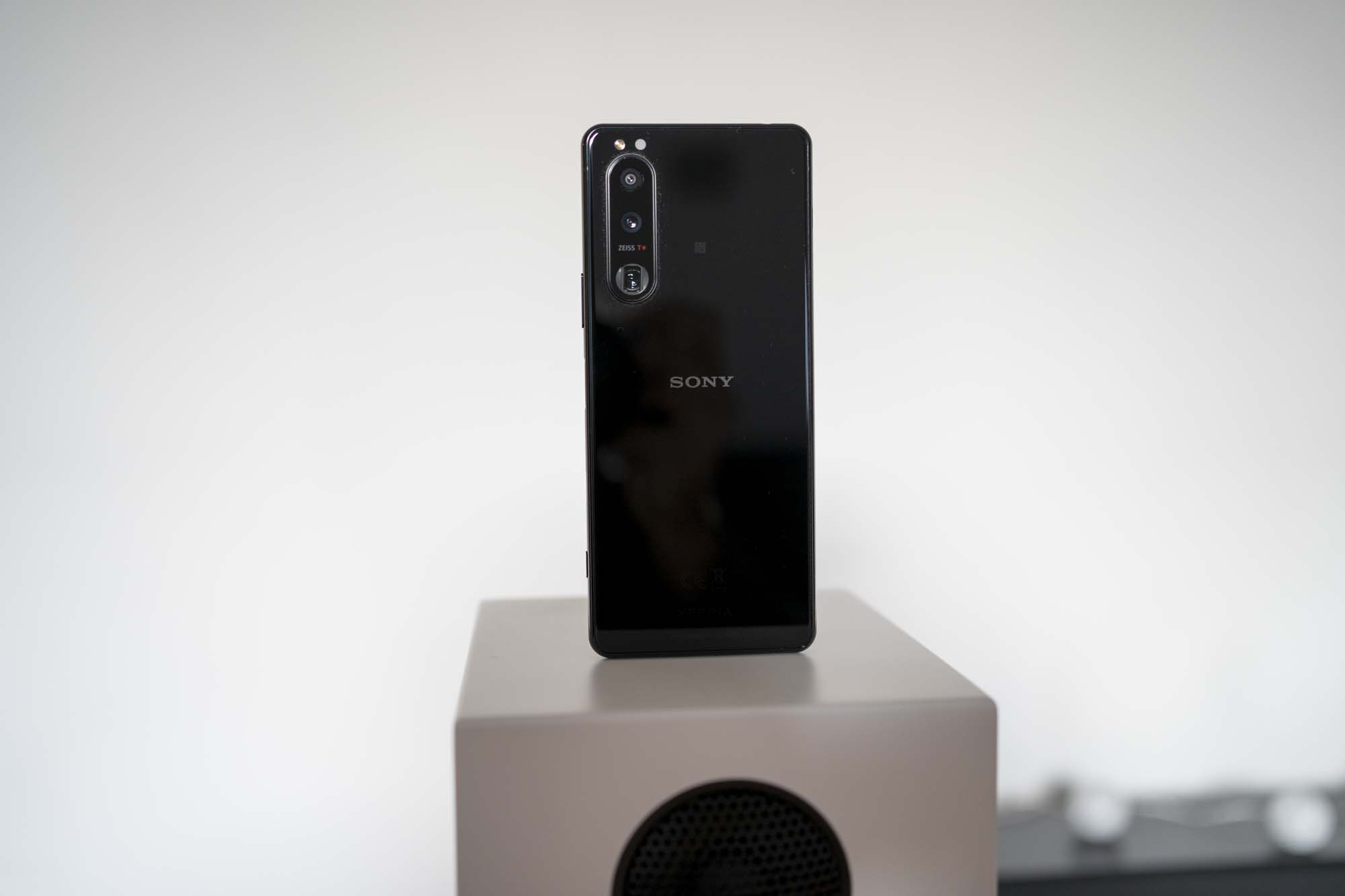
Conclusion
The Sony Xperia 5 III has proven to be a surprisingly successful smartphone, despite having its share of drawbacks. It stands out as a compact and lightweight device, offering a battery life that outperforms its competition, top-tier specifications, and a full suite of classic design elements like a notification LED, headphone jack, and stereo speakers. The ability to pack all these features into such a compact form factor is truly impressive. Additionally, it boasts an exceptional camera setup with high-quality images and unmatched autofocus capabilities.
However, it’s essential to note a few downsides. The Xperia 5 III falls short in terms of screen brightness compared to its rivals, experiences performance throttling under heavy loads, has relatively slow charging times, and lacks wireless charging capabilities. It also struggles with night photography, macro shots, and handling backlit scenes. Therefore, it wouldn’t be accurate to claim that the Sony Xperia 5 III excels in every aspect. There are smartphones with fewer of these limitations. Still, they often sacrifice the compact form factor that the Xperia offers.
The Sony Xperia 5 III has a distinct character and numerous strengths, making it a device that many can genuinely appreciate. It’s worth noting that it stands apart from the crowd of Chinese smartphones with customized UIs. Nevertheless, its higher price tag is a point of consideration, especially for a model that doesn’t quite reach flagship status, although it comes remarkably close.
We love: the camera’s autofocus performance
We don’t like: performance drops under prolonged load
Who is the Sony Xperia 5 III for :
- For Sony fans who use Sony cameras
- For people looking for classic, manual camera operation
- For those looking for the highest specification in a possibly small smartphone
- For people who value long battery life
Who is not the Sony Xperia 5 III for :
- Not for people who like the largest displays possible
- Not for those who like to use wireless charging
- Not for people who focus on macro photos and night photos without a tripod
